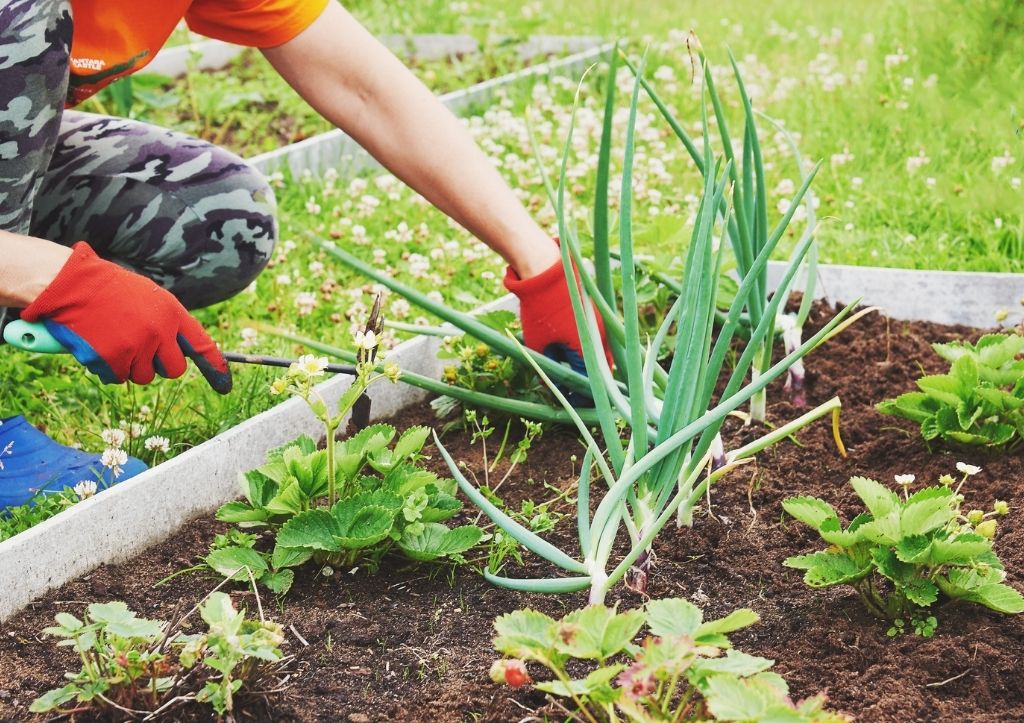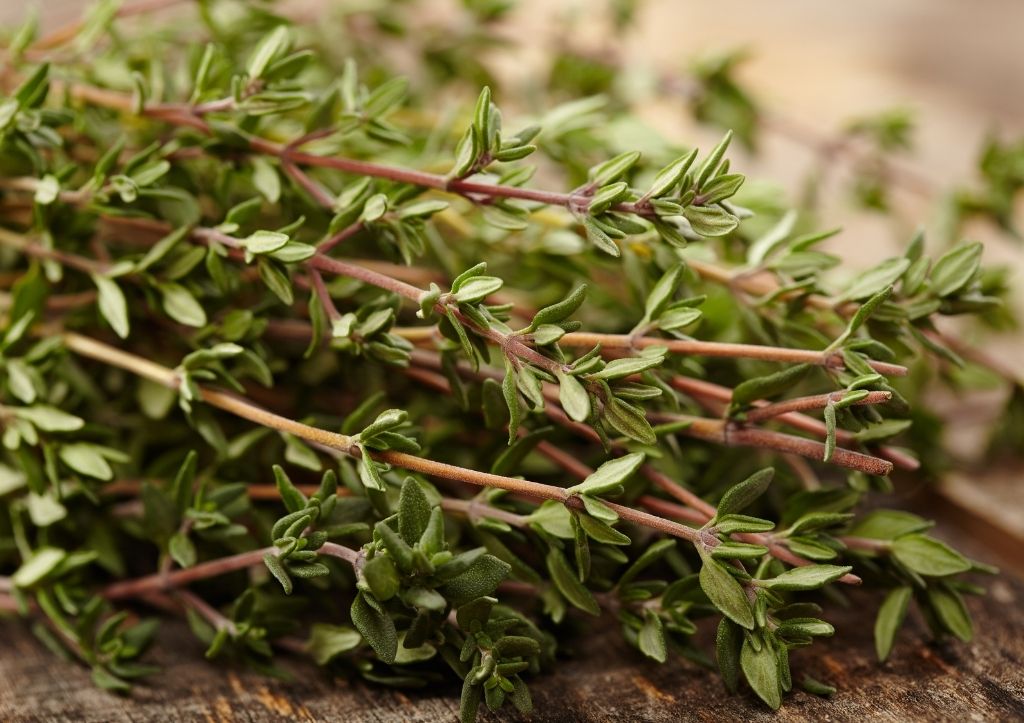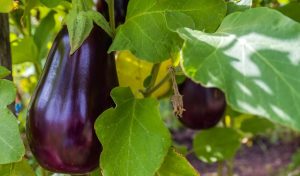When it comes to planting a kitchen garden, there are endless possibilities.
But, with so many options, it can be tough to decide what to put in your garden.
To help narrow down the choices, here is a list of some versatile and common plants that are perfect for a kitchen garden.

What to plant in a kitchen garden
Start by experimenting with foods you enjoy, and be sure whatever you decide to grow in your region will thrive before getting discouraged.
Think about the things that you use most frequently in the kitchen and perhaps those plants that you might like to try as an experiment.
[amazon box=”B091925NYJ,B096YKSQ3D,B00GT49WS2″ grid=”3″]
Some common plants for kitchen garden growing
1. Herbs
Herbs are a must for any kitchen garden.
They add flavor to food, and many have medicinal properties.
Some popular herbs to grow in a kitchen garden include basil, thyme, mint, and parsley.

2. Vegetables
Vegetables are another essential ingredient for any kitchen garden.
There are many different vegetables to choose from, and each one has its own unique flavor and texture.
Some popular vegetables to grow in a kitchen garden include tomatoes, cucumbers, peppers, and carrots.

3. Fruit
Fruit is a delicious addition to any kitchen garden.
There are many different types of fruit to choose from, and each one has its own unique flavor.
Some popular fruit to grow in a kitchen garden include strawberries, raspberries, and blueberries.

Tips for growing a kitchen garden
1. Location, location, location
The first step in planting a kitchen garden is to choose the right location.
Make sure the spot you choose has plenty of sunlight and good drainage.
2. Size matters
When it comes to planting a kitchen garden, size does matter.
Try to choose a spot that is at least 4 feet by 4 feet.
3. Start small
Don’t be intimidated by the thought of planting a kitchen garden.
Start small by choosing just a few plants to grow.
As you get more experienced, you can add more plants to your garden.
4. Get creative
The best part of planting a kitchen garden is getting to be creative.
Try growing different types of vegetables and herbs that you might not normally find at the grocery store.
5. Use containers
If you don’t have enough space to plant a traditional kitchen garden, don’t worry.
You can still grow vegetables and herbs by using containers.
Just make sure the containers have good drainage and plenty of sunlight.
6. Keep it clean
One of the benefits of growing a kitchen garden is that you can keep it clean.
Unlike a traditional garden, there is no need to weed a kitchen garden.
7. Use your imagination
The possibilities for growing a kitchen garden are endless.

Our recommendations for a kitchen garden
It’s often helpful to have an indication of the types of plants that are used regularly in the kitchen and which can be easily grown in the kitchen garden – these are our popular choices:
- Basil is a quick-growing, aromatic herb that tastes great in salads, on pizza and pasta dishes, or as a base for homemade pesto.

2. Mint has a pleasant, fresh aroma and complements roast lamb, Middle Eastern dishes like tabouleh, and lemonade. It’s also an important component in mojitos, and you can use it as a garnish for desserts if you want to try something new.

3. Another low-maintenance, wonderful-scenting herb is rosemary. It goes great lamb, a few sprigs when roasting lamb makes a big difference to the flavor.

4. Thyme is a fragrant, highly aromatic herb. It prefers well-drained soil, so don’t be afraid to water it often. This low-maintenance plant is green all year and is great for many dishes.

5. Bell Peppers can be used for many different dishes from salads to chilli and spicy foods. They typically take 2 to 3 months to reach maturity.

6. Carrots are great for juicing and are a perfect snack food. They can also be grated into salads, soups, or stews.

7. Cucumbers are a great way to beat the heat in summertime. Not only do they taste great in cold drinks, but they’re also a good source of nutrients and dietary fiber.

8. Tomatoes are a must for any kitchen garden. They can be used in salads, sauces, or simply eaten fresh off the vine.

9. Strawberries are a delicious and healthy snack that are perfect for both children and adults. They’re also a great addition to many different recipes.

10. Raspberries are another delicious and healthy snack option that can be enjoyed by people of all ages. They’re also a great addition to many different recipes.

11. Blueberries are a healthy snack that is perfect for both children and adults. They’re also a great addition to many different recipes.

12. Green beans can be used in a variety of dishes, such as salads, side dishes, and even main courses. They’re also a good source of protein and dietary fiber.

13. Zucchini is a versatile vegetable that can be used in many different dishes, such as pasta sauces, casseroles, and even desserts.

14. Onions are an important ingredient in many different dishes. They’re also a good source of dietary fiber and vitamin C.

15. Garlic is another important ingredient in many different dishes. It’s also a good source of dietary fiber and vitamin C.

16. Lettuce is a great addition to any salad and is a good source of dietary fiber and vitamin A.

17. Radish can be grown in both the spring and fall, making it a great choice for kitchen gardeners who have a limited growing season. They’re also a good source of vitamin C and potassium.



What to do if you don’t have a lot of space
If you don’t have a lot of space for a kitchen garden, don’t worry.
You can still grow vegetables and herbs by using containers.
Just make sure the containers have good drainage and plenty of sunlight.
Containers will dry out much more quickly than the garden so make sure that you check them daily and water if needed.
Getting started
If you’re just starting out, we recommend that you plant a variety of different vegetables and herbs.
This will give you a chance to experiment with different recipes and see which ones you like the best.
As you get more experience, you can start specializing in certain plants or types of dishes.
Final words
A kitchen garden is a great way to get fresh, homegrown vegetables and herbs.
Once you have tasted your own home grown produce , you’ll never want to go back to buying it from the store.
So get started today and you’ll be enjoying your own delicious home grown food in no time.






